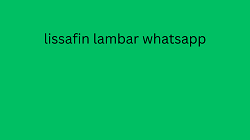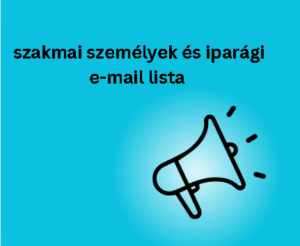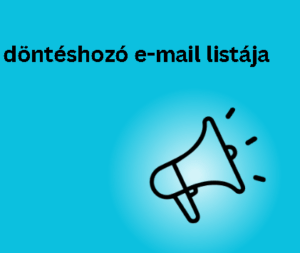Marketing rejasi kerak Siz erishmoqchi bo’lgan har qanday narsa qandaydir rejaga muhtoj bo’ladi. Biznes egasi sifatida sizning asosiy maqsadingiz ko’proq mijozlarni jalb qilish va ko’proq savdoni yopishdir. Ishoning yoki ishonmang, bunga erishish puxta marketing rejasidan boshlanadi. Marketing maqsadli mijozlaringizni xizmat yoki mahsulotingizni sotib olishga undaydi. Demak, usiz siz muvaffaqiyatsizlikka uchragansiz.
Marketing rejasi hozir va vaqt o’tishi bilan biznesingiz muvaffaqiyati uchun juda muhimdir. Biznes o’sishiga eng samarali tarzda erishish uchun ushbu biznes vositasidan foydalanishingiz kerak . Ammo, bunga kirishdan oldin, marketing rejasi nima?
Marketing rejasi nima?
Marketing rejasi – bu korxonalar tomonidan qo’llaniladigan o’ziga xos yo’l xaritasi. U marketing strategiyasini belgilaydi va ma’lum vaqt ichida maqsadli auditoriyangizga erishish uchun qilingan qadamlarni ta’kidlaydi. Marketing rejasi marketing maqsadlari, reklama byudjeti, harakat bosqichlari va boshqalarni o’z ichiga oladi. Maqsad strategiya va taktikalaringizni uyushgan tarzda yozib olishdir. Bu sizga yo’lda qolishga va kampaniyangiz muvaffaqiyatini o’lchashga yordam beradi. Bu osonroq bo’ladi, chunki barcha ma’lumotlar bir joyda bo’ladi.
Marketing rejasi bozor tendentsiyalaridagi o’zgarishlar, mijozlar talabi va narx masalalarini hal qilish uchun rivojlanishi kerak. U bir necha oydan uch yilgacha davom etishi mumkin. Biznesning barqaror o’sishini ta’minlash uchun rejangizni iloji boricha yangilab turishingiz juda muhimdir. Rejalarining har xil turlariga quyidagilar kiradi:
- Ijtimoiy media marketing rejasi.
- Brendlash rejasi.
- Elektron pochta marketing rejasi.
- Saqlash rejasi.
- Kontent marketing rejasi.
- Mijozlarni jalb qilish rejasi.
- Chop etish marketing rejasi.
- SEO rejasi.
- Obro’ni boshqarish.
- Pulli marketing rejasi.
Marketing rejasi odatda quyidagilarni o’z ichiga oladi:
- Sizning uzoq va qisqa muddatli marketing va reklama maqsadlaringiz haqida umumiy ma’lumot.
- Biznesingizning maqsadli bozori yoki xaridor shaxsining tavsifi.
- Sizning so’nggi marketing pozitsiyangiz tavsifi.
- Yuqori darajadagi marketing strategiyasi va taktikasi.
- Strategiyangizning muayyan vazifalarini qachon bajarishingiz xronologiyasi.
- Mahsulot va xizmatlarni ilgari surish uchun ijtimoiy platforma tanlash.
Rejasini tuzayotganda, uni muntazam ravishda ko’rib chiqish va qayta ko’rib chiqishni talab qilishini yodda tuting.
Shuning uchun sizga marketing rejasi kerak
Agar siz biznes egasi bo’lsangiz, sizga marketing rejasi kerak. Marketing savdoni rag’batlantiradi va busiz siz biznesingizni uzoq muddatda davom ettirish uchun zarur bo’lgan pulni topa olmaysiz. Marketing muvaffaqiyatli kompaniyalarni muvaffaqiyatsiz kompaniyalardan ajratib turadi. Kambag’al biznes rahbarlari marketing rejalariga vaqt va resurslarni sarflay olmasalar ham, buyuk rahbarlar bunga erishadilar.
Marketing rejasi – bu sizning biznesingiz muvaffaqiyatini siz tasavvur qilganingizdan yuqoriroqqa ko’tarishga yordam beradigan kuchli vositadir. Shuning uchun sizga marketing rejasi kerak:
Bu sizga o’lchanadigan maqsadlarni qo’yish imkonini beradi
Marketing rejasi sizga ishlash va erishish uchun o’lchanadigan maqsadlarni qo’yish imkonini beradi. Vazifa bo’yicha juda batafsil ko’rsatmalar, topshiriqni bajarish muddati va maqsadli auditoriya uchun bo’lishi kerak. Siz va sizning jamoangiz yil davomida biznesingiz samaradorligini va sotishni yaxshilash uchun aniq maqsadlarga e’tibor qaratishingiz mumkin.
Reja sizning g’oyalaringizni o’rganishga imkon beradi va siz ushbu g’oyalar yordamida bir yoki bir nechta maqsadga erisha olasizmi yoki yo’qmi. Biznes maqsadlari yangi mahsulotlarni yaratish, yangi jamoa a’zolarini qo’shish va eng muhimi, daromad bilan bog’liq bo’lishi mumkin. Sizning maqsadlaringiz jamoangizning harakatlari biznesingiz maqsadlariga mos kelishini ta’minlash uchun aniq belgilanadi.
Vaqt o’tishi bilan marketing rejangiz o’zgargani uchun maqsadlaringiz ham o’zgaradi.
Fokus va izchillikni ta’minlaydi
Bugungi kunda mavjud texnologiyalar va marketing vositalari bilan chalg’itish va biznes maqsadlaringizga e’tiborni yo’qotish oson. Biznes egasi sifatida sizda marketing funktsiyalari uchun kunning ko’p soatlari bor. Marketing rejasi sizni vaqtni behuda sarflamaslik uchun birinchi navbatda muhim vazifalarni belgilash va ustida ishlashga qaratadi. Siz faolroq bo’lishingiz va harakatlaringizni muvofiqlashtirishingiz mumkin.
Korxonalar ko’pincha faqat marketing faoliyatiga e’tibor qaratadilar, ular haqiqatan ham savdo bo’lganda. Marketing faoliyatining ushbu to’lqini yangi mijozlarni keltirib chiqarishi mumkin. Ammo rejasiz, sizning e’tiboringiz faqat siz yutgan mijozlarning ehtiyojlarini qondirishga qaratiladi. Bu sizning marketing faoliyatingizning to’xtab qolishiga va sotish imkoniyatlarining pasayishiga olib keladi.
Yaxshi marketing rejasi sizning biznesingizni sotishda izchil va uzluksiz bo’lishga imkon beradi. Vaqtingiz va kuchingiz haqida realist bo’lasiz. Marketing rejasi puxta o’ylangan bo’lib, vazifalar va ularni bajarish muddatlarini aniqlashni osonlashtiradi. Bu sizning biznesingizni rivojlantirish uchun mustahkam poydevor yaratadi va investitsiya qarorlarini qabul qilishni osonlashtiradi.
Reja yordamida siz hamma bir sahifada, tartibli va yo’lda bo’lishini ta’minlashingiz mumkin. Har bir inson uchun maxsus ko’rsatmalar mavjud. Shunday qilib, ular biznes maqsadlariga erishish uchun nima qilish kerakligiga alohida e’tibor qaratishlari mumkin. Busiz sizning rejangiz samarasiz bo’lib qoladi va tez orada parchalanadi.
Maqsadli auditoriyangizga erishishingizga yordam beradi
Marketing rejasi sizning maqsadli auditoriyangizni va ularga qanday xizmat qilishni xohlayotganingizni aniqlashga yordam beradi. Bu sizning mijozlaringiz bilan ishlash uchun qo’llanma bo’lib xizmat qilishi mumkin. Tomoshabinlaringizni bilish va ular bilan qanday muloqot qilishni bilish ularga sotish imkoniyatingizni oshirishi mumkin.
Marketing rejasini tuzganingizdan so’ng, siz maqsadli auditoriyangiz eshitishni xohlagan narsaga e’tibor qarata boshlaysiz. Ular sizning biznesingizga qanday qarashlarini rejalashtirasiz. Natijada siz maqsadli auditoriyangizga aniq xabar berasiz.
Vaqt o’tishi bilan auditoriyangiz sizga ishonishni boshlaydi, bu esa muhim savdolarni yopishni osonlashtiradi.
Siz resurslaringizni samarali rejalashtirishingiz va boshqarishingiz mumkin
Aniq marketing rejasi sizning biznesingizga qanday byudjetni ajratish kerakligini tushunishga imkon beradi. Shuningdek, siz qanday faoliyat turlarini va ularni etkazib berish uchun qanday resurs darajasini bilishingiz mumkin. Marketing rejasi sizga boshqarishga yordam beradigan eng muhim manba bu vaqtdir. Bu har qanday kechikishlardan, shuningdek, rejada bo’lmagan va vaqt sarflaydigan harakatlardan qochishga yordam beradi.
Reja yordamida siz o’zingizning biznes vazifalaringizni, marketing maqsadlarini va hokazolarni taqsimlash uchun zarur bo’lgan resurslar soni haqida qaror qabul qilishingiz mumkin. Marketing rejasisiz resurslaringizdan samarali foydalana olmaysiz.
Marketing uchun ROI va byudjetingizni maksimal darajada oshiradi
Biznes bilan shug’ullanayotganda byudjet juda muhimdir. Marketing rejasisiz sizda marketing byudjeti yo’q. Sizning rejangiz byudjetingizni aniqlaganda, u maksimal daromad keltiradi va ancha yuqori ROI hosil qiladi. Reja muvaffaqiyatingizni o’lchashga ham yordam beradi, chunki siz byudjetingizdan qanday foydalanganingizni aniq bilasiz.
Reaktiv o’rniga proaktiv bo’lishga imkon beradi
Biznes egalari ko’pincha hamma narsani oldindan bilish uchun resurslarga ega emaslar. Marketing rejasi reaktiv o’rniga faolroq bo’lishga yordam beradi. Siz vaziyatni tezda o’zgartirishingiz mumkin, chunki siz o’zingizning munosabatingiz qanday bo’lishini oldindan rejalashtirgansiz. Shunday qilib, kelayotgan narsalarni ko’rsangiz, javobingizni oldindan belgilashingiz mumkin.
Bu sizning murojaat nuqtangiz
Hech bir biznes egasi o’zining barcha strategiyalari va rejalarini boshida saqlashini kutmasligi kerak. Marketing rejasini yaratish sizga ma’lumot nuqtasi chet el ma’lumotlari yoki chuqur qo’llanmani beradi. Agar siz o’zingizning strategiyangizga murojaat qilishingiz kerak bo’lgan vaziyatga tushib qolsangiz, tashvishlanishingizga hojat yo’q. Sizning marketing rejangiz siz foydalanishingiz uchun o’sha erda bo’ladi.
Jamoangizni birlashtiradi
Sizning jamoangizni marketing rejasiga qanchalik ko’p jalb qilsangiz, u shunchalik yaxshilanadi va jamoangizni birlashtiradi. Ular sizning rejangizga sarmoya kiritadilar va egalik qilishni boshlaydilar. Marketing rejangizni tuzayotganingizda, jamoangizni baholashingiz va ular qaysi sohaga eng mos kelishini ko’rishingiz kerak bo’ladi. Jamoangizni jalb qilishni va ular bilan rejalaringizni baham ko’rishni e’tiborsiz qoldirmang.
Ish yukini jamoangiz uchun alohida boshqariladigan axborot bilan ishlashni qanday osonlashtiradi vazifalar va vazifalarga bo’lishingiz mumkin. Jamoangizdagi har bir kishi o’zi ixtisoslashgan vazifalarni bajarishda ma’lum rolga ega bo’ladi. Rejaga ko’ra, hamma hamjihatlikda ishlaydi. Bu sizning biznesingizga qo’shimcha qiymat beradi.
Raqobatchilarga qarshi mukammal qurol
Raqobatda ustunlik qilishning marketing rejasidan ko’ra yaxshiroq yo’li bormi? Marketing rejasi bo’lmasa, sizning raqobatchilaringiz allaqachon sizdan muhim afzalliklarga ega. O’z marketing rejangizni yaratish sizni raqobatchilardan oldinga qadam qo’yishi mumkin.
Sizni o’yindan oldinga qo’yadigan strategiyalarga marketing rejasi kerak ega bo’lasiz. Yaxshisi, agar kerak bo’lsa, qayta ko’rib chiqish, qayta ko’rib chiqish va o’zgartirish uchun barcha strategiyalaringiz yozib olinadi. Siz maqsadli auditoriyangizga qanday erishishni va savdoni oshirishni rejalashtirayotganingizni aniq bilib olasiz. Raqobatchilar sizning siringiz nimada ekanligiga hayron bo’lishadi.
Xulosa
Muvaffaqiyatli korxonalar marketing maqsadlariga bgb katalogi erishish uchun aniq, samarali rejalardan foydalanadilar. Muvaffaqiyatli biznesni marketing rejasisiz qurishingiz mumkin, ammo u erga borish uchun sizga deyarli abadiy kerak bo’ladi. Oddiy marketing rejasi sizni u erga tezroq olib kelishi mumkin bo’lsa, nima uchun biznes muvaffaqiyati sari qiyinroq yo’lni tanlash kerak?
Business Marketing Engine muvaffaqiyatli biznesni yo’lga qo’yishda maqsadlaringizga erishishingizga yordam beradi va yordam beradi. Marketing rejalari bo’yicha qo’shimcha ma’lumot yoki har qanday savol uchun bugun Business Marketing Engine bilan bog’laning !







